
Acrylic on Canvas 2019
60” x 48”

Acrylic on Canvas 2017
60”x96”
On December 17, 1903, a man-made vehicle took flight for the first time and fundamentally changed the relationship between humans and their landscape.
Physical features of the land have always framed humanity’s story: drought forced people to migrate, flooding created political upheavals, mountains created new languages, rivers birthed nations and oceans became the edge of the earth.
And humanity struggled against these physical limitations and sculpted the landscape with her technologies: channeling rivers to turn a dry patch into fertile soil, turning mountains into garrisons, and oceans that once was the edge of the world became was tamed through the technology of ships.
However, with each technology helping humanity escape the limits of the physical landscape, she has never severed her deep need to be rooted, for a place of meaning, for a home.
The story of the first flight in Kitty Hawk (Outer Banks of North Carolina) tells this complex and emotive story of humanity’s relationship to land(e)scapes. The Wright brothers grew up in Dayton Ohio where dreamed and engineered their plane. But it was not a good place (land) for flight tests. They looked for a landscape offering “privacy, steady winds and wide-open, non-vegetated spaces.” They studied the United States Weather Bureau for a location meeting these criteria and wrote letters to qualifying cities. Capt. William Tate of North Carolina wrote back: “You could, for instance, get a stretch of sandy land one mile by five with a bare hill in the center eighty feet high, not a tree or bush anywhere to break the evenness of the wind current… I assure you, you will find a hospitable person when you come among us.”
Landscapes have never been merely the physical features but the people who sculpt that land, the society and the stories those societies tell about the intimacy with their land. Capt. Tate invited the Wright brothers to Outer Banks for its sandy beach and “Southern hospitality.”
Flight fundamentally changed humanity’s landscape for it gave her wings, and with it the power to transcend/rise above the land. All prior vehicles remained grounded, stuck to earth. The plane needed to touch neither sea nor land. All physical barriers became surmountable. You can pass a mountain, a sea or a plain field in the same amount of time.
More profoundly, this transcending of land reconfigured how humanity saw the earth. Space was measured in time, how long it will take to visit another place on earth. With flight, space shrank because flight sped up movement. Suddenly, the earth was smaller as you could go anywhere in a day. One began to imagine a single human society, a global citizenry.
Yet, even as flight gave this gift of transcendence, it also deepened the longing of humanity’s desire to be/long. The sense of belonging continues to be about a physical place, a particular landscape, its oceans and rivers, its trees and flowers, and more specifically, the people of that land.
Kitty Hawk was the place where the distance/difference between Kitty Hawk and other cities began to be displaced. Cities began to look like each other. At the same time, Kitty Hawk has forever become the place of the first flight, where a museum and a monument gathers people to that specific site to touch the story of flight, to belong to that story.
In this painting, I’m trying to express that complex and emotive, ever-evolving yet ever the same relationship between humanity and landscapes, the longing to (e)scape and to belong to a land.
The complex textured blues of the background are the seas and heavens and land, the earth seen from a flight, a blue marble.
The black circular strokes are the contrails of a plane, expressing the continuous attempt at transcendence only to return to our constant longing to belong.
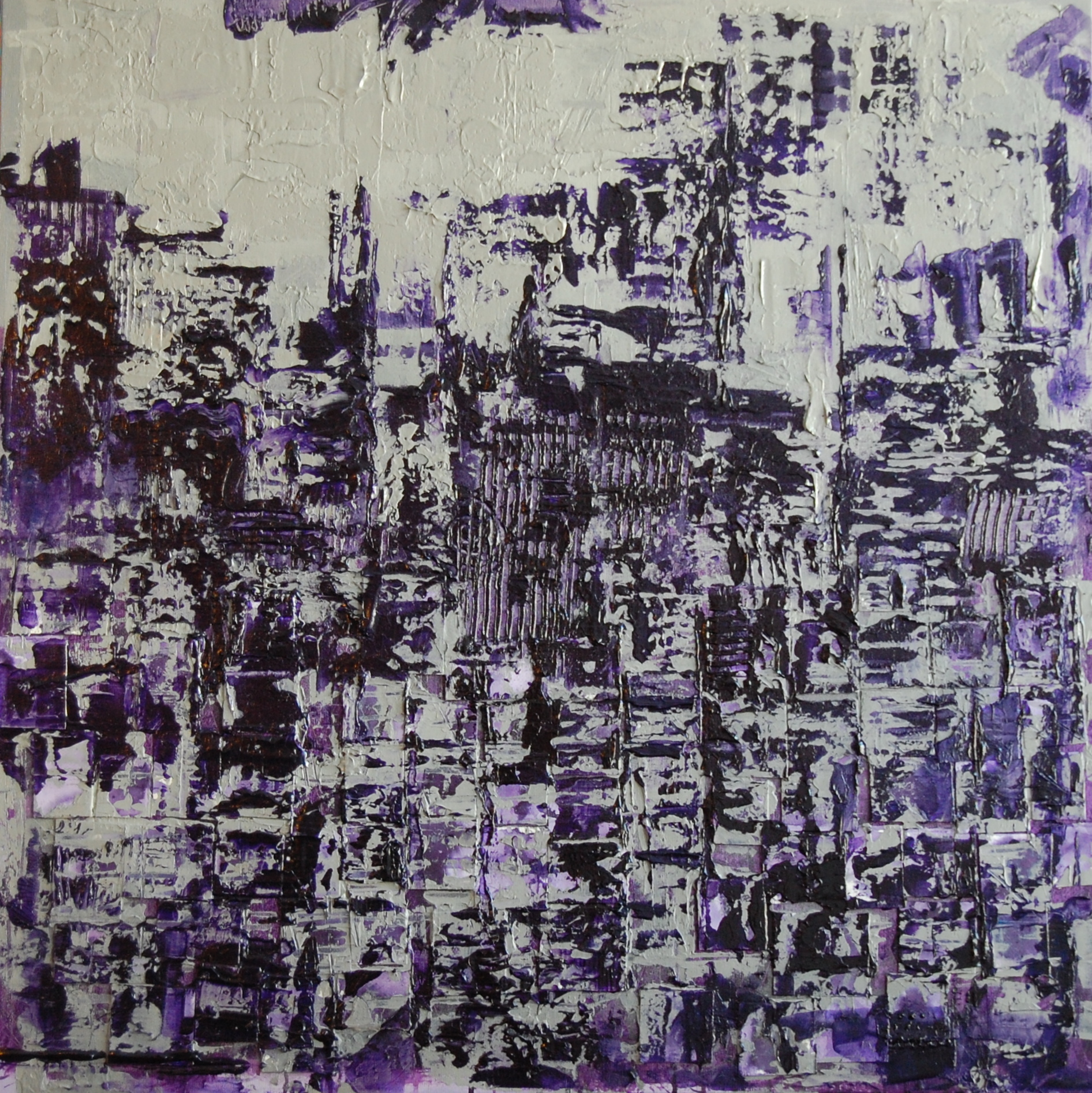
Acrylic on Canvas 2018
(exhibited at IMURJ)
36”x40”

Acrylic on Canvas 2018
52” x 39.5”
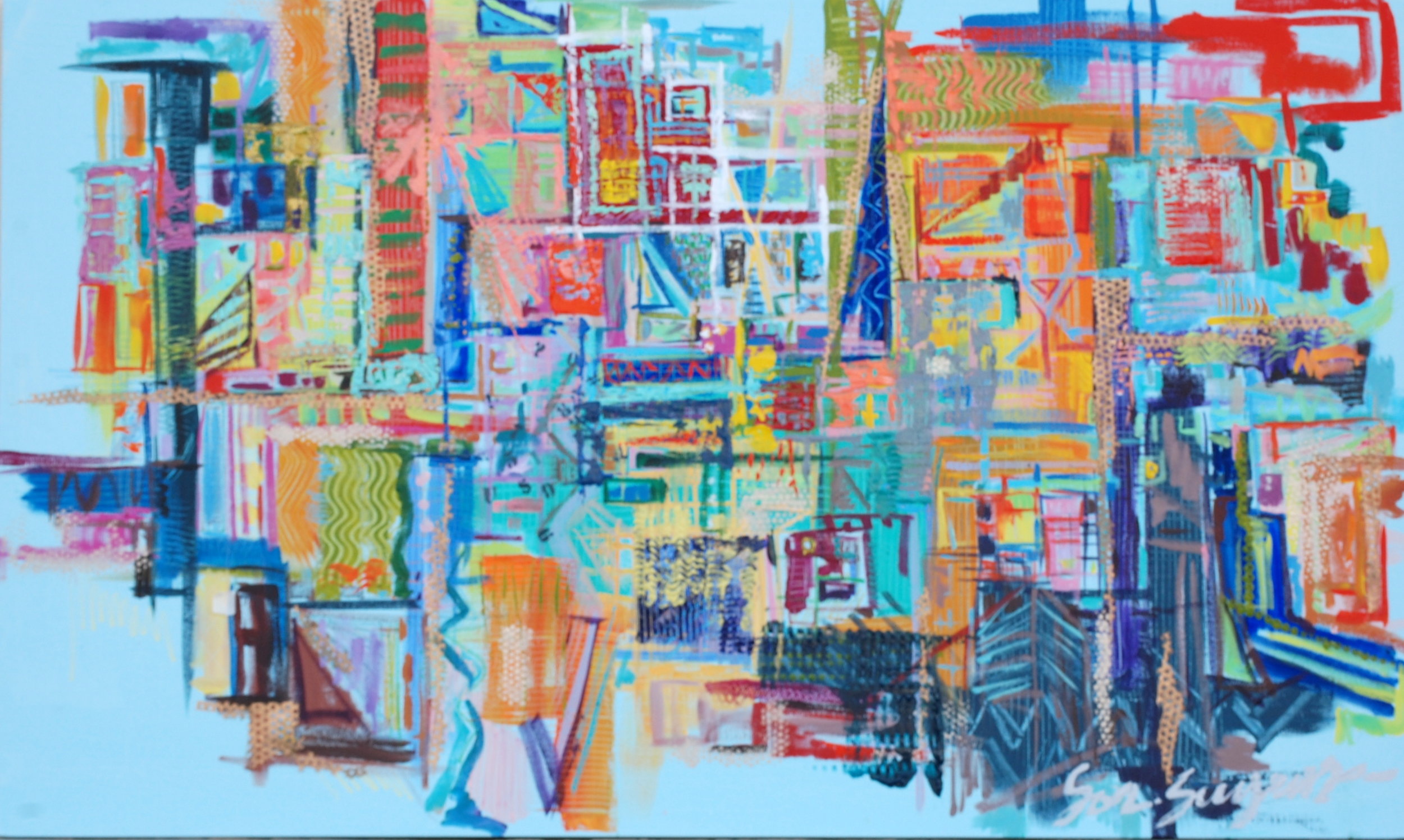
Acrylic on Canvas 2016
36”x60”

Acrylic on Canvas 2017
48" x 96"
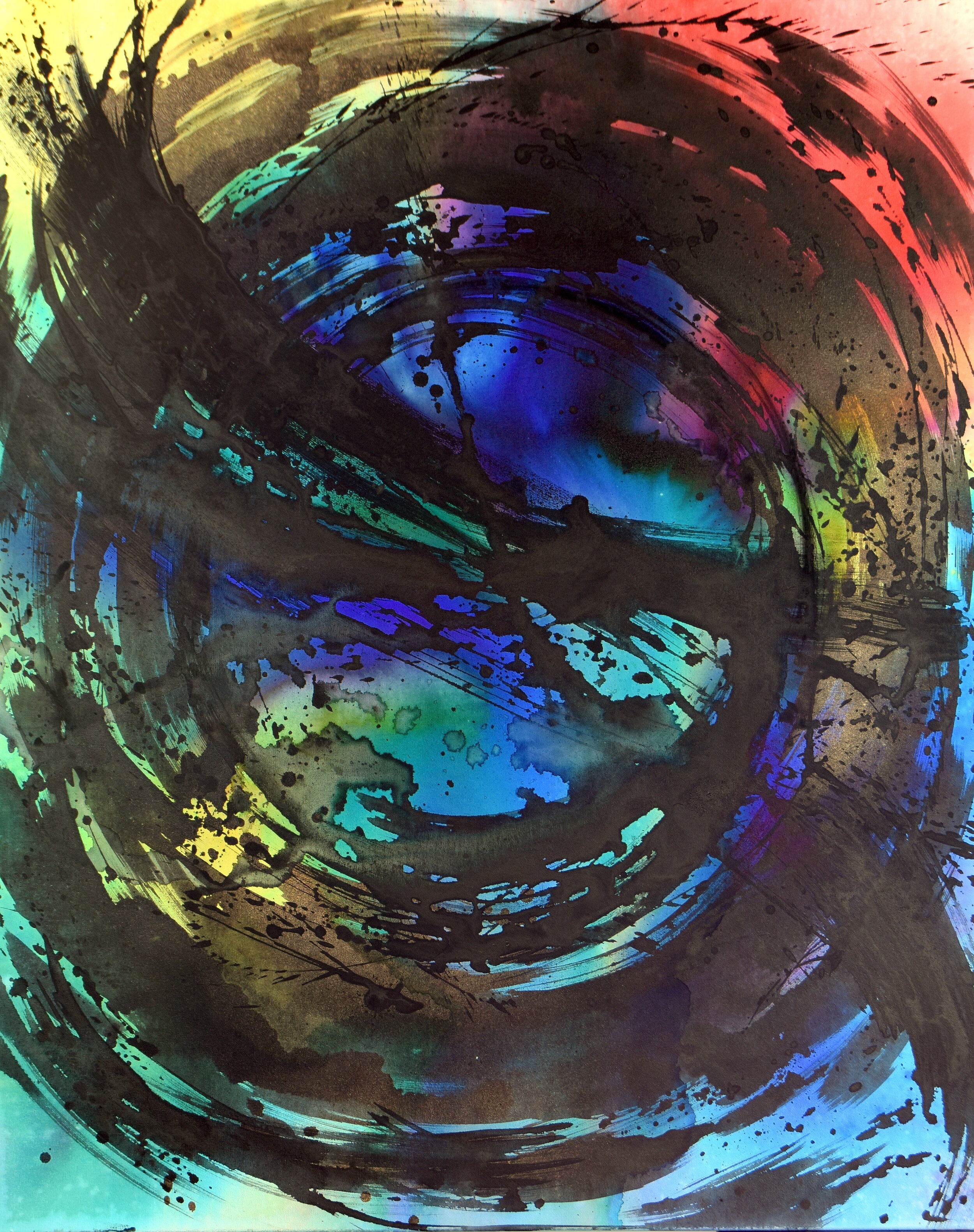
Acrylic on Canvas 2019
60” x 48”
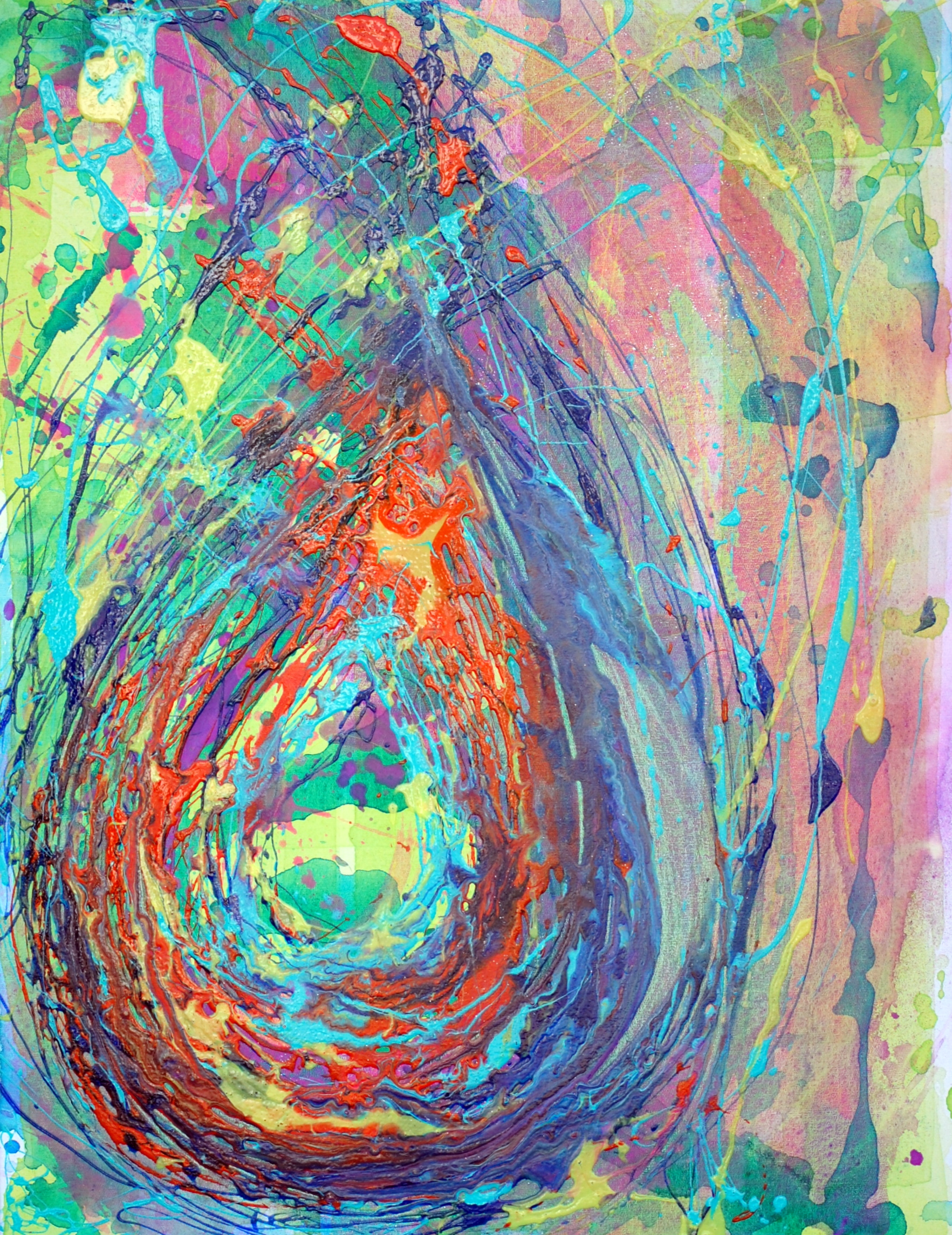
Acrylic on Canvas 2018
30” x 40”
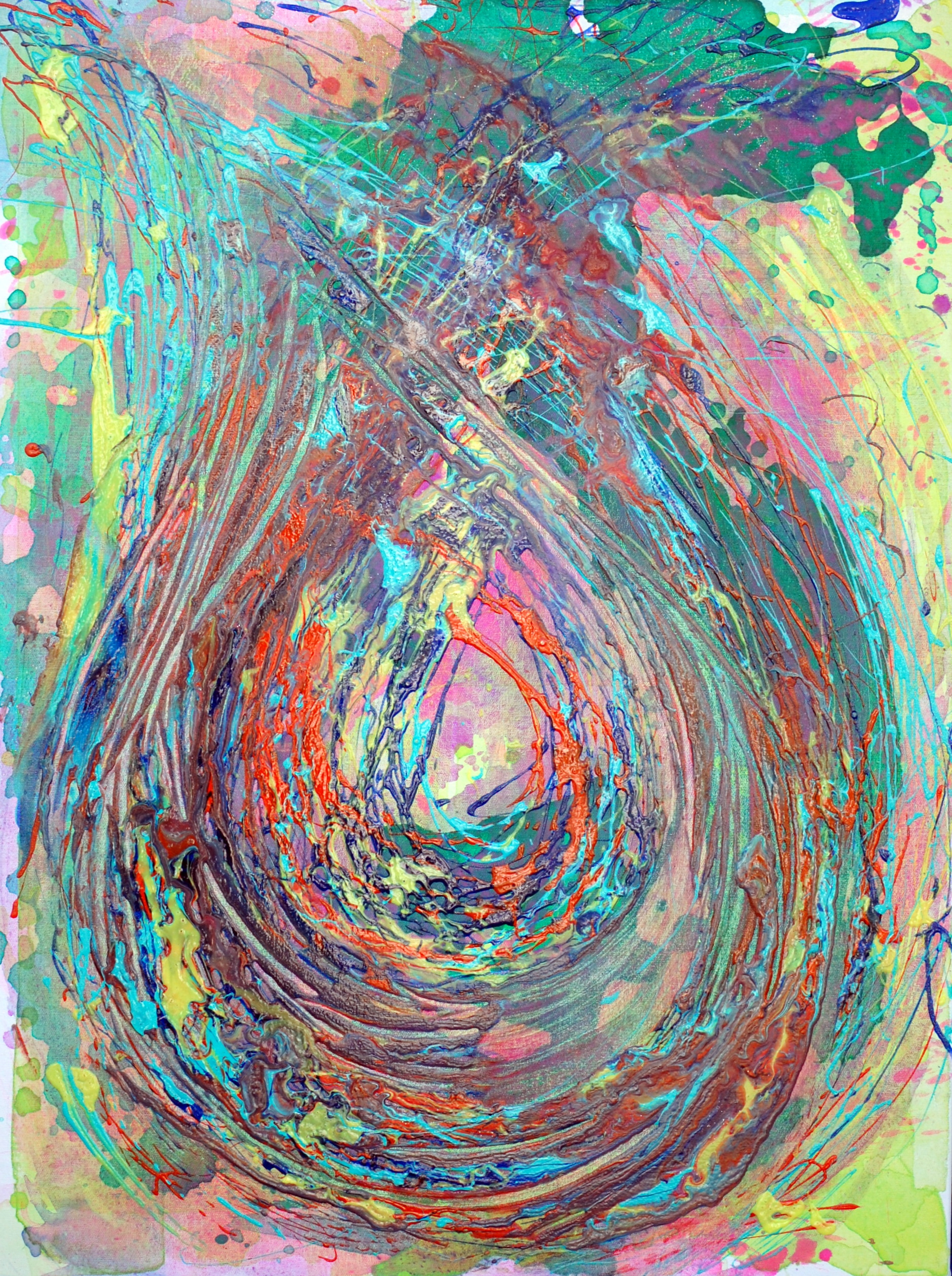
Acrylic on Canvas 2018
30” x 40”









Acrylic on Canvas 2019
60” x 48”
Acrylic on Canvas 2017
60”x96”
On December 17, 1903, a man-made vehicle took flight for the first time and fundamentally changed the relationship between humans and their landscape.
Physical features of the land have always framed humanity’s story: drought forced people to migrate, flooding created political upheavals, mountains created new languages, rivers birthed nations and oceans became the edge of the earth.
And humanity struggled against these physical limitations and sculpted the landscape with her technologies: channeling rivers to turn a dry patch into fertile soil, turning mountains into garrisons, and oceans that once was the edge of the world became was tamed through the technology of ships.
However, with each technology helping humanity escape the limits of the physical landscape, she has never severed her deep need to be rooted, for a place of meaning, for a home.
The story of the first flight in Kitty Hawk (Outer Banks of North Carolina) tells this complex and emotive story of humanity’s relationship to land(e)scapes. The Wright brothers grew up in Dayton Ohio where dreamed and engineered their plane. But it was not a good place (land) for flight tests. They looked for a landscape offering “privacy, steady winds and wide-open, non-vegetated spaces.” They studied the United States Weather Bureau for a location meeting these criteria and wrote letters to qualifying cities. Capt. William Tate of North Carolina wrote back: “You could, for instance, get a stretch of sandy land one mile by five with a bare hill in the center eighty feet high, not a tree or bush anywhere to break the evenness of the wind current… I assure you, you will find a hospitable person when you come among us.”
Landscapes have never been merely the physical features but the people who sculpt that land, the society and the stories those societies tell about the intimacy with their land. Capt. Tate invited the Wright brothers to Outer Banks for its sandy beach and “Southern hospitality.”
Flight fundamentally changed humanity’s landscape for it gave her wings, and with it the power to transcend/rise above the land. All prior vehicles remained grounded, stuck to earth. The plane needed to touch neither sea nor land. All physical barriers became surmountable. You can pass a mountain, a sea or a plain field in the same amount of time.
More profoundly, this transcending of land reconfigured how humanity saw the earth. Space was measured in time, how long it will take to visit another place on earth. With flight, space shrank because flight sped up movement. Suddenly, the earth was smaller as you could go anywhere in a day. One began to imagine a single human society, a global citizenry.
Yet, even as flight gave this gift of transcendence, it also deepened the longing of humanity’s desire to be/long. The sense of belonging continues to be about a physical place, a particular landscape, its oceans and rivers, its trees and flowers, and more specifically, the people of that land.
Kitty Hawk was the place where the distance/difference between Kitty Hawk and other cities began to be displaced. Cities began to look like each other. At the same time, Kitty Hawk has forever become the place of the first flight, where a museum and a monument gathers people to that specific site to touch the story of flight, to belong to that story.
In this painting, I’m trying to express that complex and emotive, ever-evolving yet ever the same relationship between humanity and landscapes, the longing to (e)scape and to belong to a land.
The complex textured blues of the background are the seas and heavens and land, the earth seen from a flight, a blue marble.
The black circular strokes are the contrails of a plane, expressing the continuous attempt at transcendence only to return to our constant longing to belong.
Acrylic on Canvas 2018
(exhibited at IMURJ)
36”x40”
Acrylic on Canvas 2018
52” x 39.5”
Acrylic on Canvas 2016
36”x60”
Acrylic on Canvas 2017
48" x 96"
Acrylic on Canvas 2019
60” x 48”
Acrylic on Canvas 2018
30” x 40”
Acrylic on Canvas 2018
30” x 40”